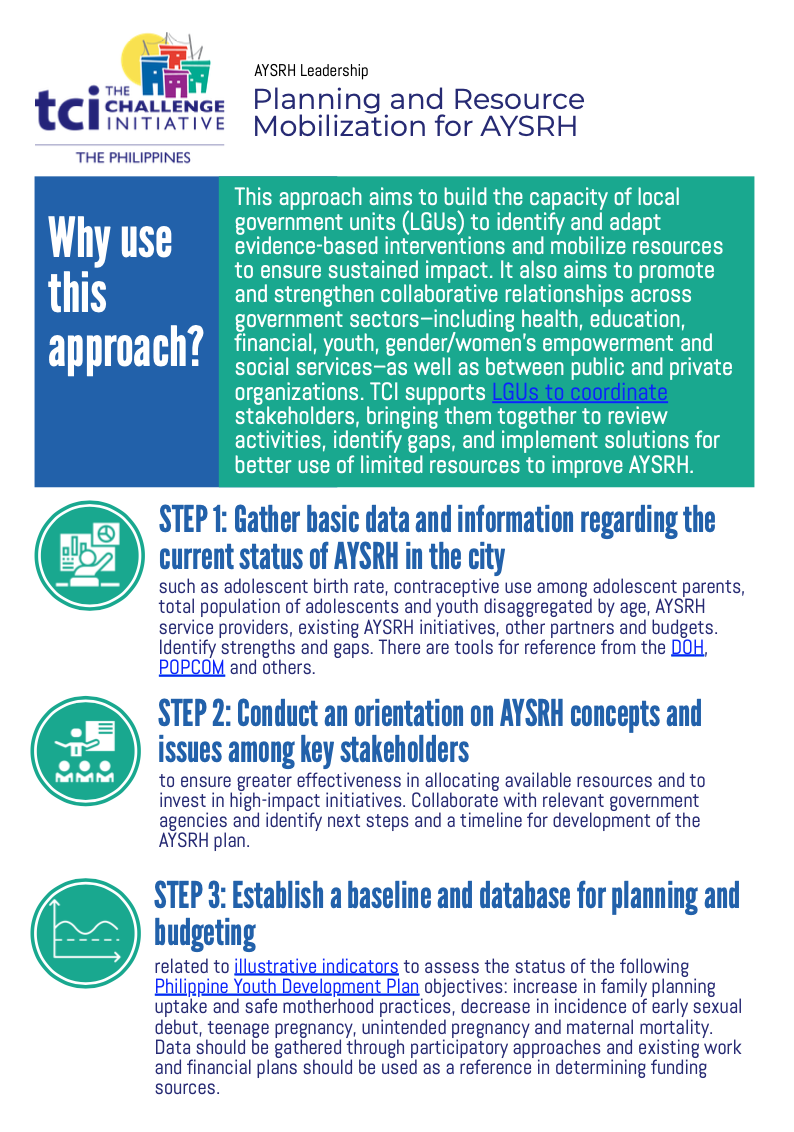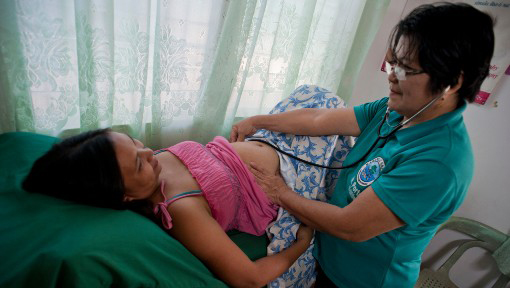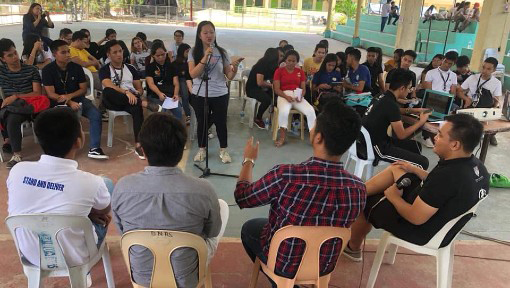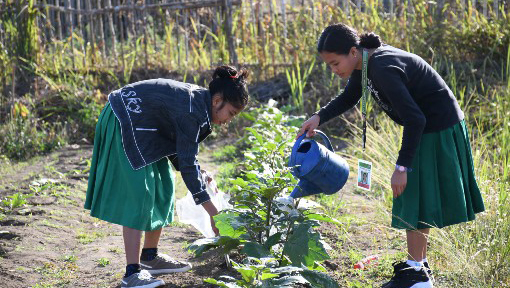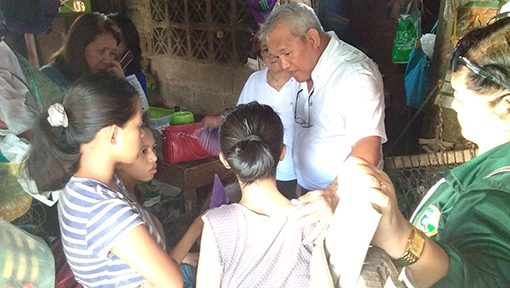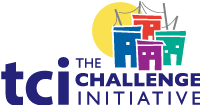Philippines Toolkit: AYSRH Advocacy
- Home
- Help and Support
- Close
- Toolkits
- Global Toolkit
- AYSRH Toolkit
- Hub Toolkits
- Core High-Impact Practices
- Gender Essentials Mini Course
- Close
- Resource Collection
- Community of Practice
- Coaching
- Log In/Register
- My Profile
- English
Planning and Resource Mobilization for AYSRH
 The key to effective and impactful adolescent and youth sexual and reproductive health (AYSRH) interventions is efficient planning and resource allocation. While there are numerous AYSRH-related interventions at the local level, many were not designed systematically and thus are less responsive to the current situation of the young people within the locality. Moreover, many of these interventions are standalone and short-term in nature, leaving them ineffective vis-à-vis the purpose and objectives for which they were implemented.
The key to effective and impactful adolescent and youth sexual and reproductive health (AYSRH) interventions is efficient planning and resource allocation. While there are numerous AYSRH-related interventions at the local level, many were not designed systematically and thus are less responsive to the current situation of the young people within the locality. Moreover, many of these interventions are standalone and short-term in nature, leaving them ineffective vis-à-vis the purpose and objectives for which they were implemented.
Although the government of the Philippines is committed to adolescent health and development needs as set forth by numerous legal mandates, there remains systemic issues in the financing and coordination of AYSRH programming, stemming from a lack of integrated planning and harmonization among local government unit (LGU) departments and partners.
Effective planning and resource mobilization is critical not only in ensuring that interventions are effectively addressing AYSRH concerns among adolescents within the locality but in making promising and proven AYSRH interventions sustainable while continuously adapting them to meet the changing needs of their beneficiaries. Within this context, this approach aims to build the capacities of LGUs to efficiently identify and adapt evidence-based interventions and mobilize available resources to ensure sustained impact of such initiatives. It also aims to promote and strengthen collaborative relationships across government sectors–including health, education, financial, youth, gender/women’s empowerment and social services–as well as between public and private organizations. TCI supports LGUs to coordinate various public and private stakeholders responsible for and contributing to AYSRH programming, bringing them together to review activities, identify gaps and implement solutions, which ultimately leads to better use of limited resources for improving AYSRH.
What are the benefits of this approach?
- Ensures greater effectiveness and impact of AYSRH interventions in addressing the actual AYSRH concerns of adolescents and youth within the locality through deep and comprehensive understanding and appropriately addressing various AYSRH issues and the critical factors affecting them
- Promotes greater efficiency in generating and allocating limited resources for AYSRH concerns
- Greater participation of adolescents and youth, in partnership and collaboration with adults, in understanding the issues that beset them and in designing, implementing, monitoring and evaluating AYSRH interventions
- Ensures that AYSRH concerns are mainstreamed within the overall development context and agenda of the locality
How to implement
Step 1: Gather basic data and information regarding the current status of AYSRH in the city
In order to get the overall picture of the AYSRH situation, gather basic data such as but not limited to: a) adolescent birth rate, b) contraceptive use among adolescent parents, c) total population of adolescents and youth disaggregated by age, d) AYSRH service providers, e) AYSRH initiatives of the city and other partners including budget. Analyze gathered data and identify current strengths and gaps.
The tools that may be used as reference for orientations include the following:
Step 2: Conduct orientation on AYSRH concepts and issues among key stakeholders
Conduct orientation on AYSRH concepts and issues among SK Officials, the Local Youth Development Council (LYDC), other youth leaders, city department heads, and other relevant stakeholders to be involved in planning and budgeting on AYSRH.
Using the gathered data and initial analysis conduct an orientation to the identified stakeholders. SK Officials, the LYDC, youth leaders, city department heads, and other relevant stakeholders need to deepen their understanding of the concepts and issues on AYSRH for them to effectively formulate appropriate and relevant interventions through the local youth development planning process. With deeper understanding of the AYSRH issues within their locality, those involved in planning and program formulation can also ensure greater effectiveness in allocating available resources by investing in initiatives that have high potential impact.
The orientation may be done in coordination and collaboration with concerned government agencies, such as the Commission on Population and Development (POPCOM) and the Department of Health (DOH). At the end of the orientation, the group should be able to identify the next steps and timelines in developing their comprehensive AYSRH plan.
Step 3: Establish a baseline and database for planning and budgeting
More responsive and effective AYSRH interventions are based on reliable data and information. As such, there is a need to set-up and prepare a database that can support the various planning and budgeting activities. The process for establishing a planning database and information may be guided or integrated within the activities of setting up the ISDN for AYSRH as well as TCI’s Data Use for Decision-Making approach.
The types of data and information needed for the AYSRH planning and budgeting may be referred to the objectives of strengthening youth participation in responsible sexual and reproductive health as one of the strategies under the Centers of Participation for the Philippine Youth Development Plan (PYDP). As such, the planning team gathers the baseline data related to these illustrative indicators to assess the current status of the following PYDP objectives:
- Increase family planning uptake
- Increase safe motherhood practices
- Lower the incidence of early sexual debut, teenage pregnancy, unintended pregnancy and maternal mortality
The AYSRH planning team or assigned offices/staff is mobilized in preparing the needed data and information to be made readily available during the actual planning workshop. AYSRH data and information may be gathered through FHSIS, target client list (TCL), formative research, focus group discussions, intergenerational dialogue, consultations and other participatory approaches. It is important that the planning team should bring with them their existing work plans and financial plans as reference in determining fund source for the comprehensive AYSRH plan.
Step 4: Conduct an assessment and planning workshop among SK officials and stakeholders
The actual planning workshop may be conducted as part of the local youth development planning and investment programming at different levels. Specifically, the planning exercises may be adopted as the platform for the formulation of Local Youth Development Plan (LYDP), Comprehensive Barangay Youth Development Plan (CBYDP) and Annual Barangay Youth Investment Program (ABYIP). The AYSRH planning may be undertaken as a separate session or as part of the planning for health as one of the centers of participation in LYDP activity. It may also be part of the ISDN approach, as noted in previous steps. The planning matrix for the LYDP, CBYDP and ABYIP as provided by DILG Memorandum Circular No. 2019-151: Guidelines on Local Youth Development Planning Comprehensive Barangay Youth Development Planning, and Annual Barangay Youth Investment Programming of the National Youth Commission accessible may be used for the planning activities.
A. Develop a plan following the ISDN and Program Design
B. Match the interventions/activities with corresponding allocation (investment programming – medium-term and annual)
It is important to match the priority interventions with corresponding budget or allocation to ensure that they can be feasibly implemented and sustained. The budgeting of activities should take into consideration the specific component activities and items that are to be considered in the implementation of the intervention.
The sources of the budget should be clearly indicated. To generate needed resources, LGUs can tap into the following sources of funding for ARSH programming.
| Additional Potential Sources of Funding | |
|
Step 5: Implement and monitor the AYSRH plan
This implementation phase starts with the commitment generated from all stakeholders. Such commitments may be documented through partnership agreements, work and financial plans or any mechanism that establishes a functional collaborative mechanism for program implementation.
Based on the agreed comprehensive work and financial plan, implementing mechanisms are set among concerned institutions. Interventions are implemented jointly by institutions tasked to initiate certain activities as planned.
It is important to monitor and evaluate the implementation of activities to ensure the progress of planned interventions and that they are implemented according to plan and allocation and, more importantly, to determine or measure the actual results of the program vis-à-vis its goals and objectives.
Indicators of success
- % of activities/interventions in the work and financial plan implemented
- % budget utilization rate
Resources needed
- Planning team
- Relevant databases
- Meeting venue
- Refreshments
- Transportation cost
TCI APP USERS PLEASE NOTE
You will only receive CERTIFICATES by email – when earning a score above 80% – and will not be able to view or print a certificate PDF from the TCI app.
Test Your Knowledge
Earn a Certificate
Quiz Summary
0 of 5 Questions completed
Questions:
Information
You have already completed the quiz before. Hence you can not start it again.
Quiz is loading…
You must sign in or sign up to start the quiz.
You must first complete the following:
Results
Results
0 of 5 Questions answered correctly
Your time:
Time has elapsed
You have reached 0 of 0 point(s), (0)
Earned Point(s): 0 of 0, (0)
0 Essay(s) Pending (Possible Point(s): 0)
Categories
- Not categorized 0%
- 1
- 2
- 3
- 4
- 5
- Current
- Review
- Answered
- Correct
- Incorrect
-
Question 1 of 5
1. Question
Benefits of this approach include:
CorrectIncorrect -
Question 2 of 5
2. Question
The AYSRH budgeting process benefits from existing financial plans to determine funding sources.
CorrectIncorrect -
Question 3 of 5
3. Question
Indicators of success include:
CorrectIncorrect -
Question 4 of 5
4. Question
How useful did you find the information and/or tools presented on this page? Please write your response in the box below using one of the following phrases: Very useful, Useful, Somewhat useful, Not useful.
Feel free to comment on why you made that choice.
-
This response will be awarded full points automatically, but it can be reviewed and adjusted after submission.
Grading can be reviewed and adjusted.Grading can be reviewed and adjusted. -
-
Question 5 of 5
5. Question
How do you intend to use the information reviewed and/or tools that you accessed?
-
This response will be awarded full points automatically, but it can be reviewed and adjusted after submission.
Grading can be reviewed and adjusted.Grading can be reviewed and adjusted. -
Advocacy Approaches
Helpful Tips
- The participation and involvement of all stakeholders is very critical in planning and budgeting in ensuring ownership of the AYSRH interventions and program. It is important to ensure the commitment of each stakeholder for more efficient implementation of the plan.
- Data and information are likewise vital in identifying and adapting evidence-based interventions.
- Skills in developing proposals or concept notes can help in mobilizing additional resources.
- Important interventions that require more resources beyond what is available should not be discarded but should be subjected to resource generation efforts.
- The plans identified are not cast in stone and may be revised in response to emerging issues and lessons learned.
Challenges
- The availability of data for planning will be a critical challenge.


